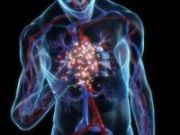Article
Researchers Use 3-D Printer to Create Implantable Elastic Membrane to Monitor Heart Health
Author(s):
The device uses sensors to warn of impending heart attack and can stimulate cardiac muscle in patients with atrial fibrillation or other rhythm disorders.

Biomedical engineers have developed a technique for using digital images and 3-D printers to make customized implantable devices that blanket the unique contours of an individual heart with embedded sensors.
The team behind the technology, which published preliminary findings in Nature Communications, believes it could forever transform how medical professionals predict and treat cardiac disorders such as atrial fibrillation.
“Each heart is a different shape, and current devices are one-size-fits-all and don’t at all conform to the geometry of a patient’s heart,” said Igor Efimov, PhD, the Lucy & Stanley Lopata Distinguished Professor of Biomedical Engineering at Washington University in St. Louis, in a news release that accompanied publication of the study results.
“With this application, we image the patient’s heart through MRI or CT scan, then computationally extract the image to build a 3-D model that we can print on a 3-D printer. We then mold the shape of the membrane that will constitute the base of the device deployed on the surface of the heart.”
The 3-D elastic membrane is made of a soft, flexible, silicon material printed not only to match the outer layer of each patient’s heart but also to expand and contract with each heartbeat, all while exerting only minimal force on the tissue.
The printers stud each of these membranes with sensors designed to monitor any number of things: temperature, mechanical strain, and pH in experiments but eventually more. Indeed, Efimov believes that technology developed by one of his colleagues will soon allow the printers to make a sensor that measures troponin, a protein expressed in heart cells that often signals a heart attack.
The mass of sensors would provide a far more comprehensive picture of heart health than current 2-D sensors, which require sutures or adhesives to maintain contact with the heart and, even then, only provide data from a small number of points.
For patients with arrhythmia, the scan-and-print technology has an added benefit; the printers should also be able to create membranes that go inside the human heart, each covered with embedded devices that deliver shocks of electricity.
“Currently, medical devices to treat heart rhythm diseases are essentially based on two electrodes inserted through the veins and deployed inside the chambers,” says Efimov, also a professor of radiology and of cell biology and physiology at the School of Medicine.
“Contact with the tissue is only at one or two points, and it is at a very low resolution. What we want to create is an approach that will allow you to have numerous points of contact and to correct the problem with high-definition diagnostics and high-definition therapy.”
The experiments written up in the paper used explanted Langendorff-perfused rabbit hearts, but the authors of the paper, who hailed from more than half a dozen universities around the world, believe they have demonstrated “routes for integrating active electronic materials and sensors in 3-D, organ-speciï¬c designs, with potential utility in both biomedical research and clinical applications.”
Those routes include both membranes designed to fit outside and inside human hearts as well as similar membranes designed to fit around or inside other organs.





